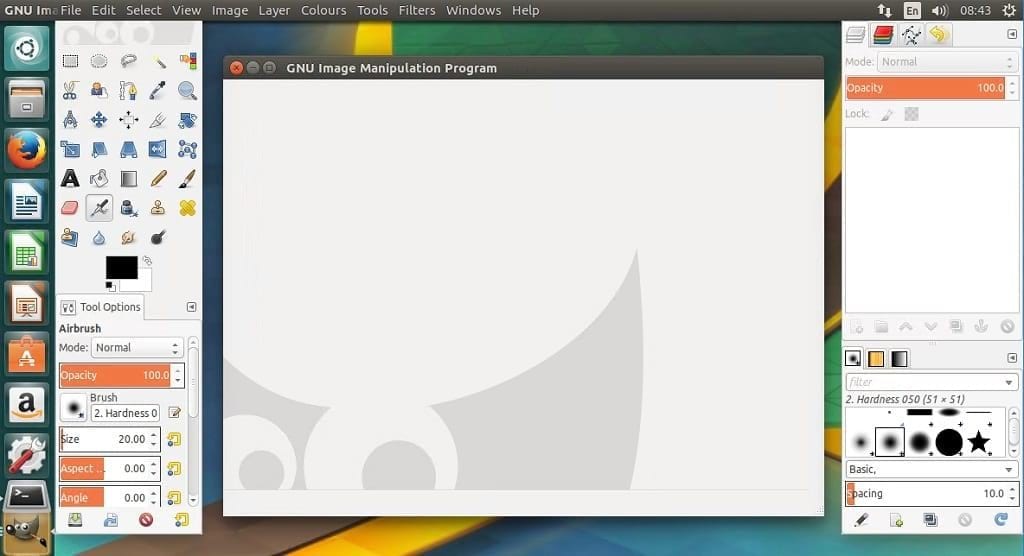Don't junk your old Mac hardware just because it can no longer get new software updates. Get some new life in your old Macs with the GNU/Linux operating system! We'll show you how to 'try it before you buy it' so to speak to see how a specific version of GNU/Linux, Ubuntu, will run on your aging Mac.
Linux Dmg File

Why bother trying GNU/Linux on your Mac?
To install from a.dmg file you usually do the following: double click the.dmg to make its content available (name will show up in the Finder sidebar), usually a window opens showing the content as well; drag the application from the.dmg window into /Applications to install (may need an administrator password) wait for the copy process to finish.
I have a late 2010 MacBook Air. It's not as fast or as optically pretty as my 5K iMac nor my iPad Pro for that matter. I do, however, use it daily. I'm writing this article on it. As old as it is, it's 'good enough' for what I use it for and I still prefer the keyboard on it to the one on more modern MacBooks.
My MacBook Air just made the cutoff for being compatible with the newly released macOS High Sierra. I'm happy to know that for at least one more year, I'll be able to get the latest and greatest doodads, bells and whistles, and more importantly, I'll get the latest security updates (good thing too as while I'll write this, we've just found out that WPA2 has been cracked and clients will need to be updated with security patches).
However, Apple at one point will deem this well working, useful, good-enough MacBook Air as unworthy of any more updates. And as I understand the reasons why my venerable MacBook Air can't be supported indefinitely, I still find it to be wasteful that a decent-enough, capable, and not to mention still functioning computer be put to pasture because of lack of software updates.
This is where GNU/Linux comes in. GNU/Linux is a free and open source operating system very similar in many respects to the under-pinnings of macOS. It comes with modern networking capabilities, web browsers, and content creation tools. Not only is it known to run well with older hardware, but you will also get many years of software and security updates that you'd likely miss out on if you were to remain on a macOS-only installation.
See how well Ubuntu Linux runs on your Mac
You needn't throw out the baby with the bathwater and wipe your old Mac's hard drive clean before trying it out. All you need is a USB drive of a least 2GB in size and an internet connection to get started. Here's how to do it.
Get your USB drive ready
- Backup your Mac.
- Launch Disk Utility.
- Attach your USB key to your Mac.
Select your External USB device from the list of volumes. (BE VERY CERTAIN YOU SELECT THE PROPER DEVICE).
- Click Erase to format your USB key.
- Name your USB key.
- Select MS-DOS (FAT) as the type of Format you wish to perform.
Click Erase.
Download the Ubuntu Linux installation file.
- Go to the Ubuntu website.
- Click Ubuntu Desktop.
- Select the Ubuntu Linux version your prefer. If you want longterm support and stability, select Ubuntu LTS (recommended). If you prefer the latest software bells and whistles, select the non LTS Ubuntu.
- Download the file.
Prepare your USB key to run Ubuntu Linux

We now need to make the USB drive capable of booting Ubuntu Linux with special software. Ubuntu recommends using Etcher.
- Go to the Etcher website.
- Download Etcher for macOS.
- Install Etcher by double clicking the .dmg file you downloaded.
- Launch Etcher.
- Select the ubuntu install file known as an Image.
- Choose the USB drive you prepared with Select Drive.
Click Flash to start the process.
How To Install Dmg File
Try Ubuntu Linux!
You're now ready to try Ubuntu linux by booting off of your newly created bootable USB key drive.
- Leave your USB Key installed into a USB port on your Mac.
- Click on the Apple Icon at the top left of your menu bar.
- Select Restart.
- When you hear the familiar 'Bing' sound press and hold the alt/option key.
- You'll see the 'Startup Manager' and you can now select to boot from the EFI Boot disk.
- Select Try Ubuntu Without Installing.
- Tap Enter.
Ubuntu Linux will now boot up!
You'll be able to connect to Wi-Fi, browse the web, write up an article (or anything else you may want to do) without making any permanent changes to your existing hard drive. See how much you like it and you can eventually install Ubuntu side by side with your macOS install or go full bore with a Linux only installation (tutorials coming later).
What do you do with your old hardware?
I get a real kick out of repurposing old technology with new abilities. I really value the longevity of a computer system that can still run modern software. If I can keep it going beyond it's expected lifespan, I'm a happy camper. What's your take? What do you do with your old hardware? Let us know in the comments!
leakedInstall Dmg File In Ubuntu Version
iPhone 9 and the next iPad Pro confirmed in iOS 14
Dmg Linux
Apple's iPhone 9, as well as the iPad Pro, AirTags and a new Apple TV remote, have all been spotted in iOS 14.